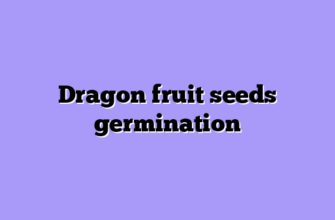Hylocereus stenopterus and Hylocereus undatus were used to make the Connie Mayer Dragon Fruit. It is one of three hybrid clones made by Eckhard Meier, who is from Germany. Bruni and Kathie Van Arum are the other two children.
Description
Hylocereus is known for its soft, three-sided growths, like this one. The mother plant, Hylocereus stenopterus, is where the softness comes from. Spines often have tiny single thorns that look like their twin sister Bruni.
Fruits range in size from small to medium, and most of them weigh between 0.25 and 1 pound. This makes it easy to tell how different it is from the Bruni variety. When ripe, the green skin turns pink, and the lemon-lime green fins and white flesh are visible through the skin.
| Preferred climate: | Tropical, subtropical |
| Outside color: | Green |
| Pulp color: | White |
| Sun: | Full to part sun |
| Average fruit weight: | 225 grams |
| Water requirements: | Drought hardy (little watering) |
| Time to fruit / flower / harvest: | 2-3 years |
| Preferred soil type: | Perfect drainage (sand / volcanic) |
| Soil pH: | Neutral (6.6-7.3pH) |
| Flavor: | 5 out of 5 |
| Appearance: | 5 out of 5 |
| Production: | 4 out of 5 |
Just like Bruni, this dragonfruit variety gets sweeter the longer it stays on the vine. It can take up to 45 days for a flower to turn into a fruit. The fruit tastes both flowery and sweet like coconut. Brix 18–23 was given and is great fresh, in jams, as a decoration, or in drinks as juice.
The flower is about the size of a fist, and its inner petals are purple. The edges of the petals are light pink, and the tips are white. The flower bud is just as beautiful as the flower itself.
Compared to other pitaya kinds, this one comes out much earlier. One bad thing about Connie Meyer is that it can’t make its own fruit. However, it can make fruit with pollen from other varieties that don’t have the stenopterus gene.
The Enchanting Enigma: My Adventures with the Connie Mayer Dragon Fruit
For years, my dragon fruit farm was a vibrant tapestry of the usual suspects: the magenta-skinned Hylocereus undatus with its crimson flesh, the sunshine-yellow Selenicereus megalanthus with its creamy center. But then, I stumbled upon the Connie Mayer, a variety that threw a curveball into my world of predictable pinks and reds. This green-skinned wonder with its snow-white heart became an obsession, a beautiful enigma that I just had to crack.
The first thing that struck me about the Connie Mayer was its looks. Forget the fiery scales of its dragon fruit brethren, this one resembled a plump green kiwi with whimsical, lime-green fins. It wasn’t the most intimidating fruit on the vine, but there was an undeniable elegance to its simplicity. However, beneath that unassuming exterior lurked a flavor profile that was nothing short of astonishing. Picking my first ripe Connie Mayer was like unwrapping a present. The green skin yielded easily, revealing a pearly white flesh that shimmered like moonlight. The first bite was a revelation. Imagine the delicate sweetness of a pear, infused with the subtle nuttiness of coconut and a hint of floral perfume. It was unlike any dragon fruit I’d ever tasted, a symphony of flavors that danced on the tongue.
Growing the Connie Mayer, however, proved to be an adventure in itself. Unlike its red-fleshed cousins, this green goddess is self-sterile. That means no solo show for her. To get fruit, I needed a red-fleshed pollinator, like the Hylocereus undatus, to play Romeo to her Juliet. Let me tell you, hand-pollination is a delicate dance. Imagine wielding a tiny paintbrush, transferring pollen from one flower to another under the cloak of night (dragon fruit flowers bloom at dusk). It’s a meticulous process, but the reward – a bounty of Connie Mayers – makes it all worthwhile.

Now, some folks might scoff at the white flesh. After all, red dragon fruit seems to be all the rage. But trust me, the Connie Mayer is a white knight in disguise. Its sweetness is more delicate, less overpowering than the red varieties. It’s perfect for those who find red dragon fruit a bit too assertive. Plus, the white flesh lends itself beautifully to culinary creativity. I’ve used it in everything from salsas and salads to smoothies and sorbets. The vibrant green skin even adds a touch of whimsy to plated desserts.
The Connie Mayer has become the star of my farm, a testament to the fact that beauty can come in unexpected packages. It’s a conversation starter at farmers’ markets, a delightful surprise for first-time tasters. It’s more than just a fruit; it’s an experience, a reminder that sometimes, the most enchanting things come wrapped in green. So, next time you’re looking for a dragon fruit adventure, seek out the Connie Mayer. You might just discover a new favorite, a hidden gem in the world of tropical delights.

Conclusion
Connie Mayer pitahaya is a cross between the H.stenopterus and the H.undatus plants. It is one of three hybrids that Eckhard Meier, a German, made.








